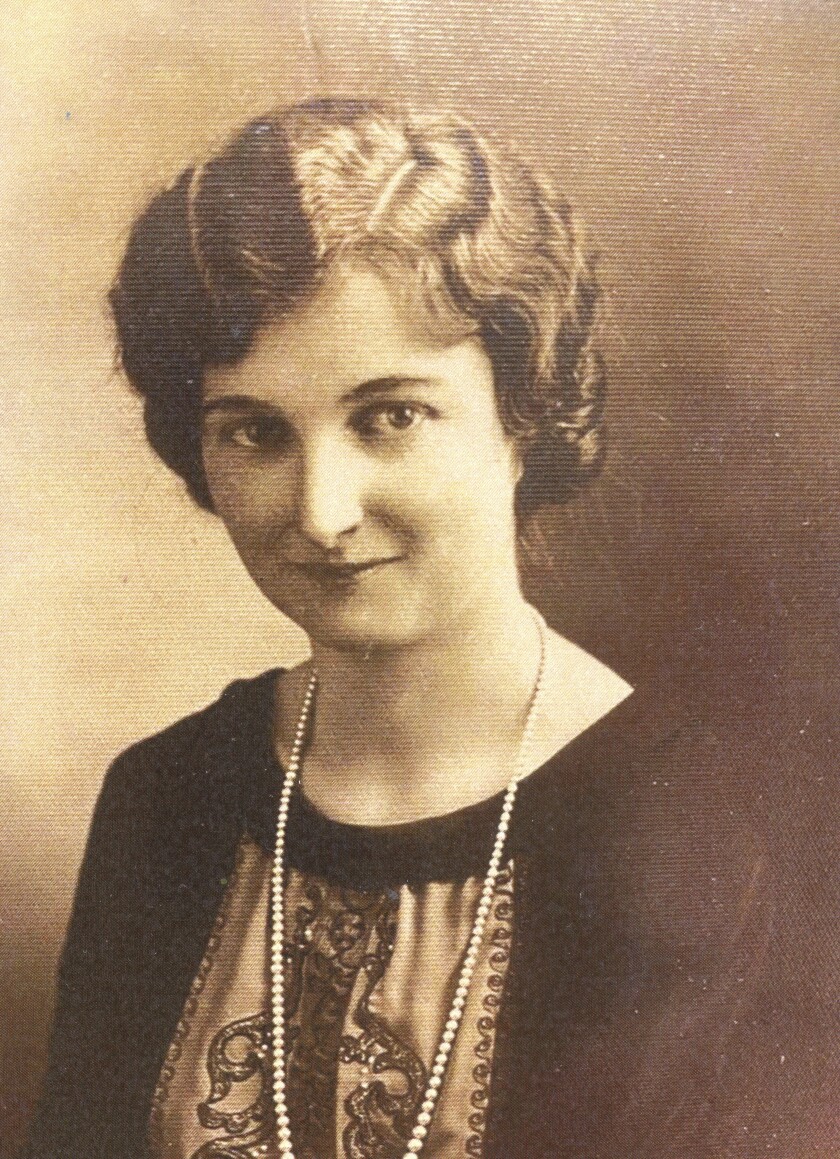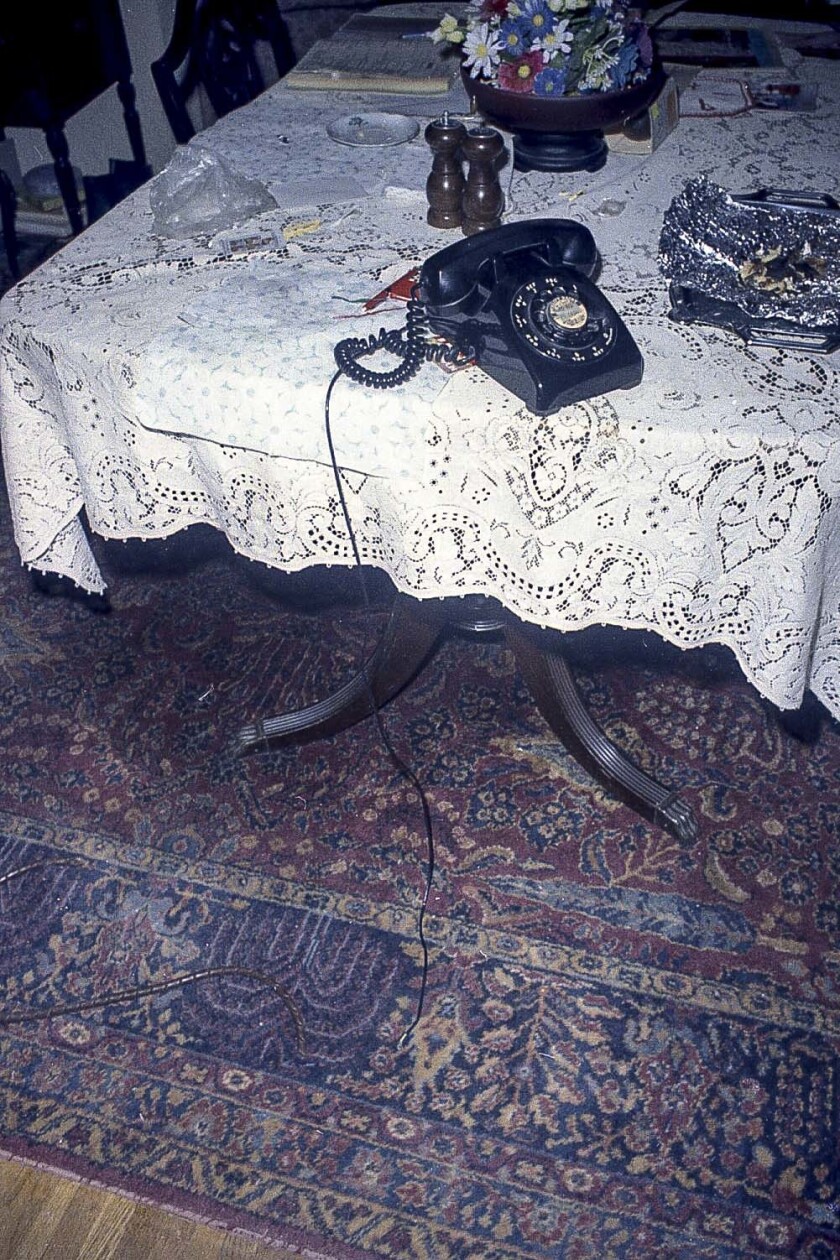WILLMAR, Minnesota — A 73-year-old woman lost her life in a violent and seemingly random attack in her home, and a rural Minnesota community on the grow lost a sense of security it had long taken for granted.
The fatal stabbing of Mabel Agnes Boyer-Herman sometime during the time span of Jan. 26-27, 1974, shocked the community of Willmar, Minnesota, in Kandiyohi County, and changed it. People began locking their doors, said Willmar Police Chief Jim Felt. The killer was at large and unknown at the time, he explained.
ADVERTISEMENT
No one has been convicted in the death of the woman known as “Mae” Herman, but a cold case investigation launched in 2020 led to the arrest in that year of a suspect linked to the scene by modern DNA technology.

The defendant, Algene Leland Vossen, 81, died in May 2023 at the Unity Point Hospital in Des Moines, Iowa. He had been found incompetent in November 2021 to stand trial on a charge of second-degree murder — with intent — not premeditated. He was in care for dementia at the time of his death.
The cold case investigation did more than lead to criminal charges in Herman’s death 46 years earlier. It also exonerated a man who was a 16-year-old runaway at the time of the homicide, and long whispered by many to be the perpetrator. Chief Felt called it an honor to notify the one-time suspect that DNA evidence had exonerated him and led to the arrest of Vossen.
“Our job is to find the guilty and to prove the innocence of people too,” said the chief as he and the lead investigator in the cold case, Sgt. Chad Nelson, spoke Aug. 16, 2023, about what it took to find the facts.

The facts were scant in 1974 when Willmar Police Department officers began their investigation into Mae Herman’s death.
"They had a lot of paths to follow because it was a true who-done-it," said Nelson of the challenge the original police investigators faced.
The police knew Herman as an unlikely victim: She was a quiet woman who lived alone and was involved in a sewing circle and her church, .
ADVERTISEMENT
Her body was found at 10 a.m. Jan. 27, 1974, by her sister, Ann Hulsether. She had come to check on Herman when phone calls had gone unanswered.
Hulsether found her sister’s body lying on a rug in the middle of her living room. When she grabbed her sister’s rotary phone to call for help, she discovered someone had ripped its wire connection out. Otherwise, there were no signs of any disruption in the house; no indication that a burglary or theft had occurred.
A physician called to the scene, Donald Mattson, counted more than 30 stabs wounds to Herman, most to her chest and torso area. There were no apparent self-defense wounds, and no sign of sexual assault, according to Nelson.
Vossen emerged as one of three main suspects in Herman’s death when, months after her death, he was caught window peeping in Willmar. He later told police he did it to “keep them (police) on their toes,” said Nelson.

Vossen had a criminal history for property crimes. In this case, he had an alibi.
Vossen said he had been bar hopping in Willmar the nights of Jan. 26 and Jan. 27 in 1974 and that he and his then-girlfriend, Lydia Olson — later his wife — usually went to John’s Supper Club and then the Veterans of Foreign Wars post and/or the American Legion in Willmar, according to a published following Vossen’s arrest in 2020.
Vossen moved to Iowa in the year following Herman’s death. Willmar Police Sgt. John Kappers followed him there in 1978 but was unsuccessful in getting useful information from him. An earlier polygraph test that Vossen had taken indicated he was “deceptive,” according to Nelson.
ADVERTISEMENT
Nelson found Vossen sharp of mind but just as uncooperative when he tracked him down to Sioux Falls, South Dakota, in 2020 to make the arrest.
The cold case investigation in 2020 that led to the arrest started with a 10-day review of all the evidence collected by the original team in 1974. The modern team members took turns reading the many typewritten pages of information that had been created. “Tedious,” is how Nelson described the early work, but it proved fruitful.

Most important, the original 1974 team had done things right in terms of keeping and preserving the evidence collected at the scene of the murder. The blood-soaked sweater and pants that Herman had been wearing at the time of her death proved critical in the modern investigation.
The local investigators sent the clothing to the Minnesota Bureau of Criminal Investigation. A scientist tested the sweater for any drop of blood that was not the victim’s. Two spots of blood found on a sleeve of the sweater turned up to belong to a male. The DNA in that blood proved to match that of Vossen, according to the criminal complaint against him.
“One thing with DNA evidence is if there is a reason for it to be there, then it’s explainable. If there is not a reason for it to be there, then it’s evidence,” said Nelson.
When confronted with the DNA evidence, Vossen had no explanation, according to court records.
Much of the evidence collected in Willmar that led to Vossen’s arrest was forwarded to law enforcement agencies in Iowa.
Last year, that it learned Vossen was being looked at in two cold cases in Iowa.
ADVERTISEMENT
In 1976, 80-year-old in her Waukee, Iowa, home. Police say she died from blows during a severe beating.
In 1978, 57-year-old in her Des Moines, Iowa, home. The county examiner determined she died from blunt force trauma to the head; the weapon was likely an ax.
Willmar Police Chief Felt credited “phenomenal work” by the original investigators and the recent cold case team, bringing together the facts and a murder charge in the Willmar case.
Yet it was not without frustrations for the investigators. Nelson pointed out that Vossen had fought extradition from South Dakota, which served to delay the start of court proceedings.
The criminal complaint was filed in July 2020. It was September before Vossen made his first appearance in Kandiyohi County District Court.
Vossen’s health declined, and for a time he was furloughed to live with a niece in Iowa. He subsequently was placed for care in the Unity Point Hospital after the niece reported abuse against her by him.
“For me, the most difficult part of it is not getting to trial,” said Nelson.
ADVERTISEMENT
Law officers work to collect the facts, he said. Forty-six years after Herman’s death, he said he was hoping to see a conclusion in the justice system.
“Mae Herman’s life was important,” said Felt.
The cold case investigation made that point clear as well as another. No matter the time it might take, police are going to continue their quest for justice in serious crimes like this.
Chief Felt pointed out that both the Vossen and Herman families suffered as a result of the 1974 homicide.
He was able to contact a surviving family member of Mae Herman’s following Vossen’s arrest. He learned that family members' hopes of seeing a resolution had dwindled as the years added up after her death.
In the same respect, he knows that Vossen’s family members have experienced their own grief in coming to terms with the knowledge that a family member was charged with a murder.
“There are no winners when something horrific and violent like this happens,” said the chief.
ADVERTISEMENT













